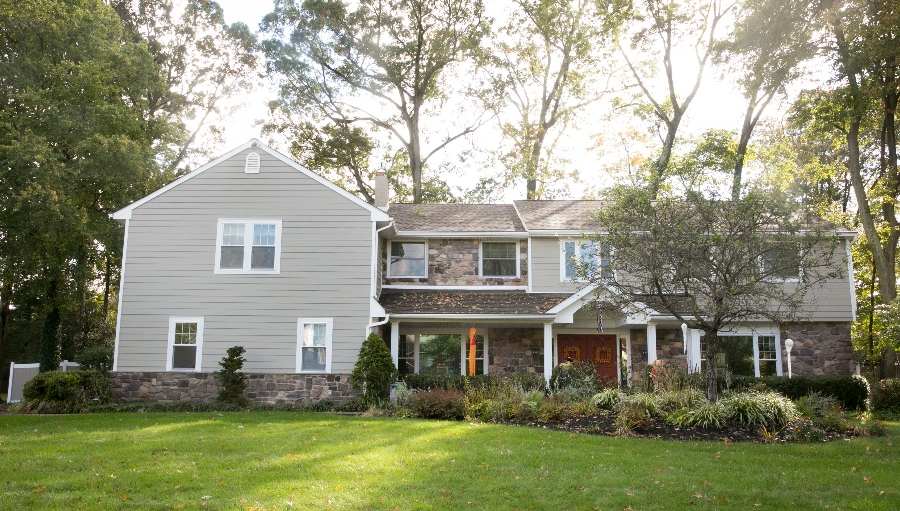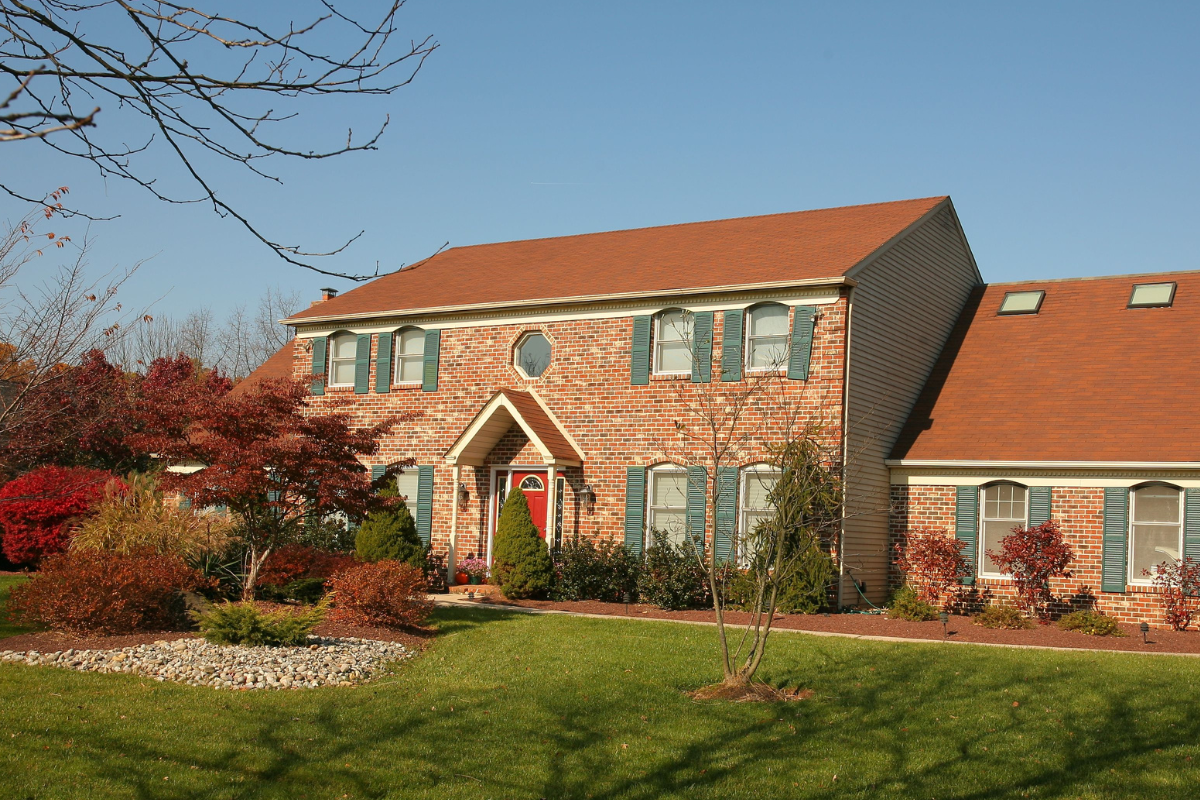The doors of your home may seem like rather simple objects, but they actually possess some complexity that's easy to overlook. We all want them to look nice since they're easily seen and play a big part in defining the style of a home and a room.
But depending on their role, they can also be a big factor in keeping our house warm, draft-free as well as quiet. Knowing what you need a door to do for you and what kinds of materials and technologies achieve those ends will help you make the right choices.
So take a few moments to get familiar with the "ins and outs" of doors (yes, pun intended!) so that it's easier to make the right choice, whether it's an interior, exterior, or patio door.
Regardless of whether you're remodeling or building new, most door choices come down to which style looks best. A door is a vertical welcome mat and because it's such a visible fixture, it only makes sense to want something that looks good. But all doors aren't created equal so it pays to understand how they're made and the differences among them in order to make the right choice.
Doors For Different Roles
Doors play different roles which govern the materials they're made from and how they're built. The basic types, not counting the garage door, are interior, exterior (or entry doors as they're also called), and patio doors. Closet doors fall into the 'interior' category.
 Exterior / Entry Doors
Exterior / Entry Doors
Exterior doors have to stand up to the elements so they're made from several different types of materials (see the material information below). exterior door Wood has been a mainstay for entry doors but other materials like steel and fiberglass offer benefits over wood.
The location of the exterior door is something to consider when making choices. Front doors are a good place to spend a little extra on good looks like a distinctive wood craftsman door or some other type that suits your style.
On the other hand, entrances that are not as noticeable like garage, mudroom and back entrances might do with less distinctive doors, allowing you the opportunity to save some money. Regardless of the type you choose, try to get one that has the best insulation value available for that style and material.
Interior Doors
 Interior doors come in many shapes and styles running the gamut from builder-grade hollow-core to beautiful custom-made wood doors. Interior doors are typically made from either wood or MDF (medium-density fiberboard), an engineered wood-based product.
Interior doors come in many shapes and styles running the gamut from builder-grade hollow-core to beautiful custom-made wood doors. Interior doors are typically made from either wood or MDF (medium-density fiberboard), an engineered wood-based product.
MDF doors don't have any grain and are usually painted. Because they're an engineered product, they're more stable (less likely to warp/twist) than solid wood. They can be routed, machined, and formed easily which allows for the application of intricate designs or mimics the look of traditional rail and stile doors.
Hollow doors transmit noise more easily than solid ones and while they may be less expensive, they feel flimsier and don't have much heft. They're built with a narrow wood frame around the perimeter with two "facings" or "skins" placed on either side.
Solid doors are made from solid wood (usually of stile and rail construction) or a real wood veneer that's layered over an MDF or some other form of hardboard core.
Patio Doors
 Patio doors are a bit more unique in that they're an exterior door but usually wider and they typically contain more glass. In that sense, they're somewhat like a window and it pays (literally and figuratively) to choose one with good energy performance. Patio doors come in a wide variety of styles and have two main configurations: sliding and hinged.
Patio doors are a bit more unique in that they're an exterior door but usually wider and they typically contain more glass. In that sense, they're somewhat like a window and it pays (literally and figuratively) to choose one with good energy performance. Patio doors come in a wide variety of styles and have two main configurations: sliding and hinged.
Some hinged styles are actually French doors, with both doors hinged at the right and left sides of the frame. Other styles offer the look of a French door but only one of the doors opens, the other is essentially a window that looks like a door.
Considerations to think about with patio doors is the difference in space-makeup between the sliding and hinged varieties. Sliding doors don't swing out into a room and thus take up less space. Hinged doors open into the room and require enough space for the door swing.
Garage Doors
 Garage doors make up the largest doors in your house and are actually the most complex. There's a wide variety of styles and types of construction and choosing the right kind for your house takes a little understanding of what to look for. Since the garage door is usually one of the most visible parts of your home it makes sense to choose one that looks great and complements the style of your house. However other considerations include which materials to choose, making sure the right safety features are included, and whether to install it yourself or have it done professionally.
Garage doors make up the largest doors in your house and are actually the most complex. There's a wide variety of styles and types of construction and choosing the right kind for your house takes a little understanding of what to look for. Since the garage door is usually one of the most visible parts of your home it makes sense to choose one that looks great and complements the style of your house. However other considerations include which materials to choose, making sure the right safety features are included, and whether to install it yourself or have it done professionally.
Door Materials
As we mentioned previously, doors are made from several different materials each with their own plusses and minuses.
WOOD
While wood still dominates the scene other materials like fiberglass and steel offer technologies and efficiencies that wood can't. Wood is used for both exterior and interior doors and one of its undying features is the natural beauty that it offers. With wood, you have the choice of many different species and various stain colors.
Other benefits of wood include the ability to repair minor damage like nicks and scrapes. Wood doors also have a more high-end look, particularly when they're stained to show off the beauty of the wood grain.
Drawbacks include a high level of maintenance and wood's natural tendency to "move" (warp and twist). A wood exterior door will need to be refinished, sometimes annually, depending on its exposure to the elements and sunlight. Its insulation value is also not as good as fiberglass and steel doors.
A wood interior door is not prone to such deterioration since it's out of the elements but swelling and warping can still be an issue if it's not sealed well enough on all sides, particularly in a humid environment.
FIBERGLASS
Fiberglass is usually used for exterior doors where its advantages are put to good use against the elements. Don't be put off by the fact that it's fiberglass -- many fiberglass doors do an incredible job mimicking the look of natural wood. The benefits of fiberglass include a relatively maintenance-free product and better insulating values than a solid wood door. This is because the door's core is filled with foam and/or other insulating materials. Fiberglass also doesn't rot or swell like wood can.
The downsides of a fiberglass door are minimal, with the most prominent arguably being the fact that it isn't a true "wood" door. But some fiberglass doors are hard to distinguish from real wood so this downside is subjective.
STEEL
Steel is another kind of entry door material and its positives include good insulating values and general durability. Like fiberglass, steel won't rot, twist, or bow like wood might when exposed to the elements. It usually costs less than a wood door.
On the flip side steel doors can dent and they'll also rust if the finish paint is scratched off exposing the steel base material. However, unless you're pretty hard on your doors, a steel door should be pretty durable and offer good service.
One other downside is that detailing on some steel doors isn't as crisp as wood or fiberglass, easily revealing the fact that it's not a true wood 6-panel exterior door you're looking at.
MDF
MDF or medium-density fiberboard is an engineered material made from wood fibers pressed tightly together and combined with glue binders. Many interior doors are made from MDF. The beauty of MDF is that it's a stable material and isn't susceptible to bowing or twisting like real wood. It's also easily molded and machined which allows manufacturers to include detailing that looks very similar to the kind you see on real wood doors. Raised panel and mission-style doors to name a few are easily reproduced using MDF.
MDF is a good choice if you're going to paint your doors since you're not going to see any wood grain (because MDF doors don't have a wood grain). That brings the cost down relative to a similar-sized/detailed wood door.
No matter what you're remodeling in your home - think of your doors as the glue that holds the decor together. It can change the feel and style of your design and give your renovation the finish it needs.




